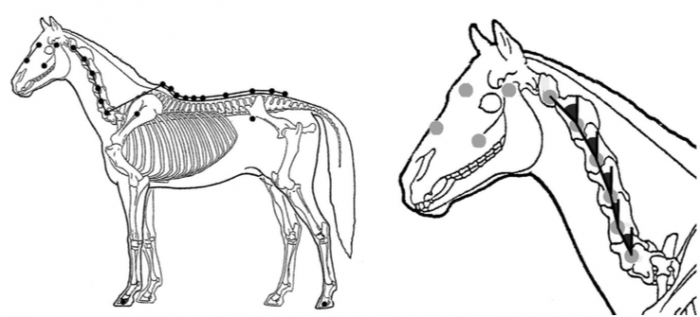
Effect of dynamic exercises on cervical mobility
Neck pain in humans is associated with changes in cervical motor control and a reduction of the intervertebral stabilising function of the deep cervical flexors (longus colli and longus capitis) and extensors (multifidus mm). Therefor an exercise approach to facilitate optimal motor control has been developed and used. Based on the human physiotherapy principles it is plausible to think that equine neck patients can benefit from this approach as well, if spinal instability or nerve root compressions are not involved.
The potential benefits are:
- Maintaining or improving cervical range of motion
- Strengthening the cervical musculature and restoring normal motor control patterns
- Postural stability after cervical injury
This study measured and compared sagittal plane intervertebral angulations in neutral standing position, with the angles of 3 cervical flexion stretches at end range of motion, by using skin markers on on the head, transverse processes of C1–C6, and dorsal spinous processes of T6, T8, T10, T16, L2, L6, S2 and S4. The subjects were 8 horses.
The 3 dynamic mobilisation exercises were performed by using a carrot and maintained for 3-5 seconds (see image above):
- chin-to-chest (chin as close as possible to the manubrium)
- chin-between-carpi (chin as far caudally as possible with the dorsum of the nose at the level of the carpal joint)
- chin-between-fore fetlocks (chin as far ventrally and caudally as possible between the fore fetlocks)
The largest changes in intersegmental angles occurred at high cervical (C1) and low cervical (C6) joints. The chin-to-chest position induced significant flexions at all cervical joints. The chin-between-fetlocks gave the greatest flexion at C6 and the greatest extension at C1. Flexion and lowering of the neck was associated with flexion of the thoracic segments from T6–T16.
> From: Clayton, Equine Vet J. 42 (2010) 688-694. All rights reserved to EVJ Ltd.. Click here for the online summary.


